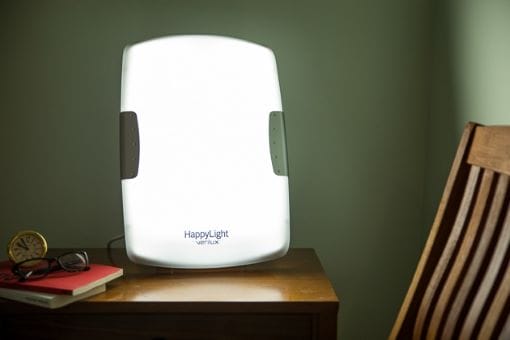Can Light Therapy Help Stop Snoring?
There is a new treatment for snoring that takes just minutes a day and is non-invasive.
Approximately half of all adults snore at least occasionally, and you may be one who does, or you may know someone who does. Snoring can be a nuisance and in some cases, can be an indicator of a more serious health issue such as obstructive sleep apnea.
In many cases, snoring can be easily remedied with the use of simple devices such as nasal strips, mouthpieces, or even pillows. Other remedies include losing weight, sleeping on your side, avoiding alcohol, stopping smoking, and getting enough sleep. Another option is Light Therapy.
What is Light Therapy for Snoring?

Light therapy has shown to be the most successful way to alter one’s sleeping schedule. It is used to expose the eyes to extreme but safe amounts of light for a specific amount of time on a regular basis. The easiest way is to get exposure to a bright light first thing in the morning. This can be done by going out into the sun as soon as you wake in the morning or by sitting in front of a bright light that is designed for this purpose.
Unfortunately, in many areas, sunlight is not available at the right time. Artificial light is used to adjust the internal clock in the same way sunlight would.
Disorders of the circadian rhythm can cause irregular sleep and wake patterns, resulting in snoring. The objective of treating people who have snoring problems due to circadian rhythm issues is to obtain a healthy sleeping pattern with an internal clock set to the right time. Light therapy can help re-set that clock.
How Do I Get Light Therapy?
Light therapy is basically just the exercise of sitting in front of a device called a lightbox. The recommended exposure is 10,000 lux (20x stronger than normal indoor light) for 30 minutes to two hours. Lower intensity requires a longer exposure. This will activate your serotonin levels, which is the hormone responsible for feeling relaxed and happy.
The commercially available lights are rated in a manner such as “10,000 lux at 12 inches.” This means your eyes should be positioned about 12 inches from the light. The light needs to fall on your eyes, though you don’t need to look directly at the light.
Timing is critical. There is a point during the sleeping period that exposure to the light could delay the sleep cycle even more. For example, in the evening. However, exposure after that specific time (in the morning) will advance it or move it to an earlier time. Basically, you should sit in front of the light immediately after you wake up in the morning.
How Effective is the Treatment?
Many people have reported a significant improvement in sleeping and a reduction in snoring and can function well in a typical 9-to-5 work schedule. Some have combined the light therapy with other non-snoring devices, such as pillows, mouthpieces, and chin straps, and have significantly alleviated or remedied their snoring issues.
Why does Light Therapy Work?
During the sleep cycle, the muscles in the throat, tongue, and roof of the mouth relax. This causes the tongue to move backward and loose tissue in the throat to droop. While breathing, this loose tissue flaps, leading to obstruction or narrowing of the airways. When the airways are obstructed or narrow, the vibration becomes greater, and the snoring becomes louder.

Often, the snoring will disrupt your circadian rhythm and cause you to wake up. This is irregular sleep-wake pattern can turn into a vicious cycle. Continually waking up during the night causes you to get less sleep. Less sleep means long days, and you are overly tired by the time you go to bed at night. When you are overtired, you tend to sleep hard and deep, and the muscles become floppier, thus creating more snoring.
Other causes that can disrupt the circadian rhythm are delayed sleep phase syndrome, jet lag, shift work sleep disorder, rapid time zone change, and non-24-hour sleep-wake disorder.
“Circadia” refers to biological activities that occur within a 24-hour cycle. The oldest circadian cycle is our relationship with light and dark and sleep and wake.
All plants, animals, and insects show changes in behavior with the light and dark. This is what is considered “circadian rhythm.” Think of the cicada bug who spends its life underground only to emerge after 13 or 17 years. This is an unusual example of light and dark, but this is where the cicada bug got its name.
Your mind has an internal clock that tells it when it is time to sleep and when it should be awake. This clock is located in the brain and is responsible for maintaining the circadian rhythms taking its signals from the darkness and the daylight. This cycle is genetic and varies from person-to-person. This explains why some people are “night owls” and some people are “morning people.”


